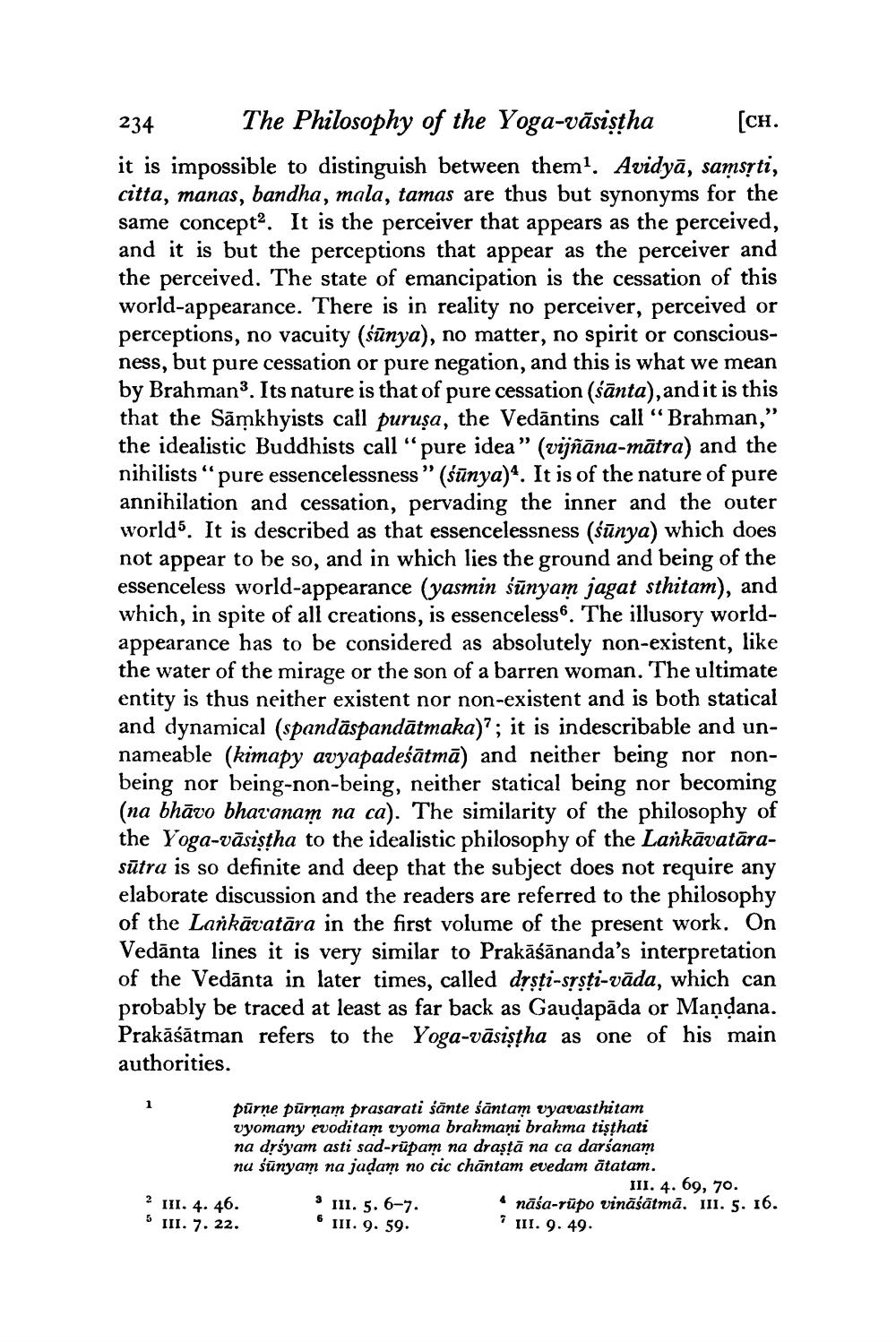________________
234
The Philosophy of the Yoga-väsiṣṭha
[CH.
it is impossible to distinguish between them1. Avidyā, samsṛti, citta, manas, bandha, mala, tamas are thus but synonyms for the same concept2. It is the perceiver that appears as the perceived, and it is but the perceptions that appear as the perceiver and the perceived. The state of emancipation is the cessation of this world-appearance. There is in reality no perceiver, perceived or perceptions, no vacuity (śūnya), no matter, no spirit or consciousness, but pure cessation or pure negation, and this is what we mean by Brahman3. Its nature is that of pure cessation (sānta), and it is this that the Samkhyists call puruşa, the Vedantins call "Brahman," the idealistic Buddhists call " pure idea" (vijñāna-matra) and the nihilists "pure essencelessness" (sūnya)1. It is of the nature of pure annihilation and cessation, pervading the inner and the outer world. It is described as that essencelessness (śūnya) which does not appear to be so, and in which lies the ground and being of the essenceless world-appearance (yasmin sunyam jagat sthitam), and which, in spite of all creations, is essenceless. The illusory worldappearance has to be considered as absolutely non-existent, like the water of the mirage or the son of a barren woman. The ultimate entity is thus neither existent nor non-existent and is both statical and dynamical (spandāspandātmaka)7; it is indescribable and unnameable (kimapy avyapadeśātmā) and neither being nor nonbeing nor being-non-being, neither statical being nor becoming (na bhāvo bhavanam na ca). The similarity of the philosophy of the Yoga-vasistha to the idealistic philosophy of the Lankāvatārasūtra is so definite and deep that the subject does not require any elaborate discussion and the readers are referred to the philosophy of the Lankavatāra in the first volume of the present work. On Vedanta lines it is very similar to Prakāśānanda's interpretation of the Vedanta in later times, called dṛṣṭi-sṛṣṭi-vāda, which can probably be traced at least as far back as Gauḍapāda or Mandana. Prakāśātman refers to the Yoga-vāsiṣṭha as one of his main authorities.
1
pūrne pūrṇam prasarati sante santam vyavasthitam vyomany evoditam vyoma brahmani brahma tişthati na drsyam asti sad-rupam na draṣṭa na ca darśanam na śünyam na jadam no cic chantam evedam atatam.
2 III. 4. 46.
5
III. 7. 22.
3 III. 5. 6-7.
6
III. 9. 59.
III. 4. 69, 70. ▲ nāśa-rupo vināśātmā. III. 5. 16. 7 III. 9. 49.




